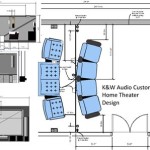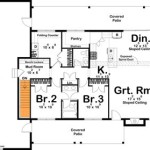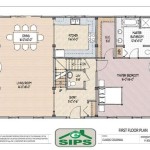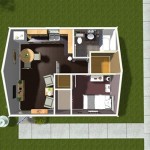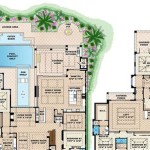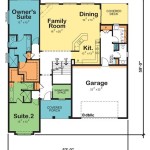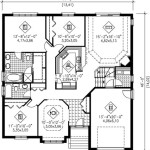Master Bedroom Floor Plan Ideas
The master bedroom is a private sanctuary within the home, a place to relax, recharge, and unwind. When designing a master bedroom floor plan, there are many factors to consider, from the size and shape of the room to the placement of windows and doors. With careful planning, you can create a master bedroom that is both functional and stylish.
Size and Shape
The size and shape of the master bedroom will dictate the layout of the room. A large, square room will offer more flexibility in terms of furniture placement than a small, rectangular room. If the room is narrow, you may want to consider using built-in furniture to save space. You should also consider the traffic flow in the room. Make sure there is enough space to move around comfortably without bumping into furniture.
Windows and Doors
Windows and doors can provide natural light and ventilation, making the room more inviting. When placing windows, consider the view and the amount of privacy you desire. Doors should be placed in a convenient location, but they should not obstruct the flow of traffic in the room.
Furniture Placement
The furniture in the master bedroom should be arranged in a way that is both functional and aesthetically pleasing. The bed is the focal point of the room, so it should be placed in a prominent location. Other furniture, such as dressers, nightstands, and a vanity, should be arranged around the bed in a way that makes sense for the space. You should also consider the size and scale of the furniture. Oversized furniture can make a small room feel even smaller, while undersized furniture can make a large room feel empty.
Storage
Adequate storage is essential in any bedroom, but it is especially important in the master bedroom. You will need a place to store clothes, shoes, and other belongings. Built-in storage, such as closets and drawers, can save space and keep the room looking tidy. You can also use freestanding furniture, such as dressers and armoires, to provide additional storage.
Lighting
Lighting is an important element in any room, but it is especially important in the master bedroom. You will need a combination of natural and artificial light to create a comfortable and inviting space. Natural light can be provided by windows, while artificial light can be provided by lamps, overhead fixtures, and sconces. You should also consider the type of lighting you want. Soft, ambient lighting is ideal for creating a relaxing atmosphere, while bright, task lighting is better for reading or working.
Decor
The decor of the master bedroom should reflect your personal style. You can choose a theme, such as a coastal theme or a rustic theme, and decorate the room accordingly. You should also consider the colors you want to use. Soft, neutral colors can create a calming atmosphere, while bright, bold colors can create a more energetic space. Whatever style you choose, make sure the decor is something that you love and that makes you feel comfortable and relaxed.

Master Bedroom Floor Plans Types Examples Considerations Cedreo

Master Bedroom Floor Plans An Expert Architect S Vision

9 Tips To Consider When Planning Your Bedroom Layout

Master Bedroom Floor Plans Types Examples Considerations Cedreo

Master Bedroom Floor Plans An Expert Architect S Vision
8 Designer Approved Bedroom Layouts That Never Fail

13 Primary Bedroom Floor Plans Computer Layout Drawings

Pin On Homeowners

Master Suite Floor Plans Ideas Decide Your House

Pin On Home Ideas

